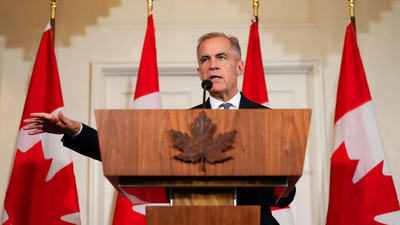India’s Russian crude oil trade rebound in October after previous quarter dip; imports rise to 1.8 million bpd: Report

In a notable shift, India’s crude oil imports from Russia have surged in the first half of October, reversing a three-month decline observed from July to September. This resurgence is attributed to Indian refineries operating at full capacity to meet the heightened demand during the festive season, as indicated by ship tracking data.Russian oil imports had previously decreased from over 2 million barrels per day (bpd) in June to 1.6 million bpd in September. However, early October data from tanker tracking suggests a rebound, with shipments of Urals and other Russian grades to India gaining momentum. This increase is supported by renewed discounts amid reduced demand in Western markets and greater shipping flexibility.Preliminary figures from global trade analytics firm Kpler indicate that October imports are tracking around 1.8 million bpd, marking an increase of approximately 250,000 bpd from the previous month, as reported by PTI. It is important to note that these figures are subject to revision.This data predates a statement made by former US President Donald Trump on October 15, claiming that Prime Minister Narendra Modi had agreed to halt Russian crude imports. However, Randhir Jaiswal, spokesperson for India’s Ministry of External Affairs, stated that he was unaware of any such conversation.Sumit Ritolia, Lead Research Analyst at Kpler, suggested that Trump’s statement was likely a pressure tactic related to trade negotiations rather than an indication of an imminent policy change. “Russian barrels remain deeply embedded in India’s energy system for economic, contractual, and strategic reasons,” Ritolia explained.Indian refiners have also confirmed that they have not received any government directives to cease Russian oil imports. India began purchasing discounted Russian oil after Western countries imposed sanctions on Moscow following its invasion of Ukraine in February 2022. As a result, Russia’s share of India’s total oil imports increased from 1.7% in 2019-20 to 40% in 2023-24, making it India’s largest oil supplier.In the first half of October, Russia maintained its position as India’s top crude oil supplier, followed by Iraq at approximately 1.01 million bpd and Saudi Arabia at 830,000 bpd. The United States has overtaken the UAE to become India’s fourth-largest supplier, with 647,000 bpd, while the UAE supplied 394,000 bpd, according to Kpler.Ritolia emphasized that Russian crude remains crucial for India, accounting for roughly 34% of its total imports and offering significant discounts that are hard for refiners to ignore. He noted that the dip in imports during July-September was driven more by seasonal factors, such as increased maintenance activity at public sector refineries, rather than tariff concerns.Despite narrower discounts compared to 2023, Russian oil remains one of the most economical options for Indian refiners due to landed discounts and high Gross Product Worth (GPW) margin outputs from grades like Urals. Discounts currently average between USD 3.5-5 per barrel, up from USD 1.5-2 in July/August.While replacing Russian crude is technically feasible, as Indian refineries can handle diverse crude grades, the shift would be challenging, costly, and risky. Substitution would require rapid scaling from multiple suppliers at higher costs, potentially leading to inflation, political backlash, and reduced refinery profitability.Ritolia believes that Indian refiners are unlikely to leave money on the table unless directed by the government, as was the case with Iranian barrels. Although there is a push for diversification, contracts for Russian crudes are typically signed 6–10 weeks before arrival, making a sudden shift difficult. Instead, Indian refiners are gradually broadening their supply sources to enhance energy security, continuity, and flexibility.India has consistently maintained that they follow an independent foreign and energy policy, balancing economic interests with diplomatic relationships. A sudden shift away from Russian crude would undermine its energy security strategy and is unlikely unless formal sanctions, similar to those on Iran or Venezuela, are imposed. “If Washington intensifies pressure, Indian refiners could make a token reduction of 100,000-200,000 bpd to demonstrate diversification and appease Western partners. However, these cuts would likely be symbolic rather than transformative,” Ritolia added.Importing higher volumes from the US to placate Trump is an option, but the potential increase is capped at around 400,000-500,000 bpd due to logistical, economic, and compatibility challenges with Indian refining systems. Kpler data shows that Indian imports of US crude have averaged 310,000 bpd so far in 2025, up from 199,000 bpd in 2024, with a yearly high of approximately 500,000 bpd expected in October.






